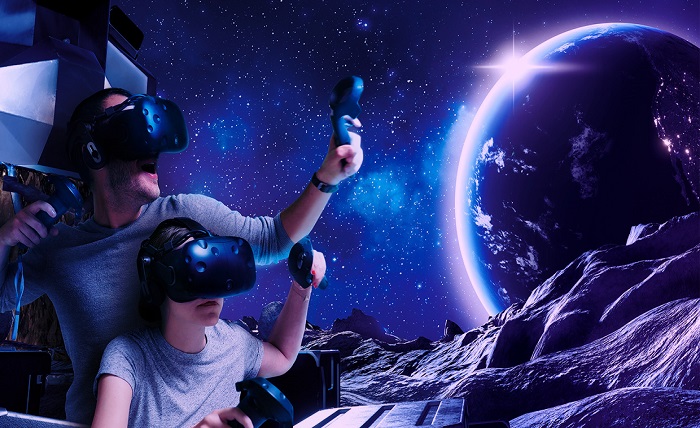
Virtual Reality (VR) is a technology that allows users to immerse themselves in a computer-generated environment. It is achieved by wearing a headset that displays a 3D virtual world in front of the user’s eyes and using sensors to track their movements and adjust the view accordingly. VR has the potential to change the way we interact with technology and revolutionize a wide range of industries.
How Virtual Reality Works
A VR headset is the primary device used to experience virtual reality. It consists of a display screen, sensors, and lenses that are worn on the head. The display screen, which is usually a pair of OLED or LCD displays, shows the virtual environment to the user. The sensors, such as accelerometers, gyroscopes, and magnetometers, track the user’s head movement and adjust the view accordingly. This creates the illusion of being in a different place and allows the user to move and look around the virtual environment as if they were physically present.
In addition to the headset, VR systems also use hand-held controllers, gloves or other devices to allow users to interact with the virtual environment. These controllers have sensors that track the user’s hand and finger movements and provide haptic feedback, allowing the user to touch, grab, and manipulate virtual objects as if they were real.
Applications of Virtual Reality
Virtual Reality has a wide range of potential applications, including:
- Gaming: VR is already being used in video games to create more immersive experiences. Players can interact with the virtual environment and characters in a more natural way, making the game more engaging and realistic.
- Training and simulation: VR is being used in many industries such as the military, aviation, and healthcare to train professionals in a safe and controlled environment.
- Education: VR is being used to create virtual field trips and interactive educational experiences. This can be beneficial for students to learn about history, science, and other subjects in an engaging and interactive way.
- Therapy: VR is being used in mental health therapy, such as exposure therapy for PTSD, to help patients confront their fears and traumas in a controlled virtual environment.
- Entertainment: VR is being used to create immersive experiences such as virtual concerts, movies, and theme parks.
- Subheading: Challenges and concerns
- Despite the many potential benefits of virtual reality, there are also a number of challenges and concerns that need to be addressed. Some of the most notable include:
- Cost: VR hardware and software can be expensive, making it difficult for some people to access the technology.
- Comfort: Some users may experience discomfort or motion sickness while using VR due to the mismatch between the virtual environment and their physical body.
- Isolation: VR can be an isolating experience, and long-term use may lead to social isolation and lack of real-life interactions.
- Privacy and security: As VR technology is becoming more common, there are concerns about the safety and security of personal data and the potential for misuse.
Virtual Reality (VR) technology has the potential to change the way we interact with technology and revolutionize a wide range of industries. From gaming, training, and education to therapy and entertainment, VR allows us to immerse ourselves in a computer-generated environment and interact with it in a more natural way. However, the cost, comfort, isolation, and privacy concerns are among the challenges that need to be addressed to make sure that VR will be accessible to all and used in a safe and responsible way. As the technology continues to evolve, we can expect to see more innovative uses for VR and the potential for even greater immersion and engagement in the virtual world.




